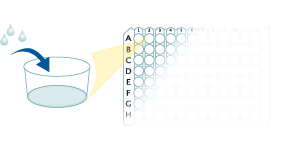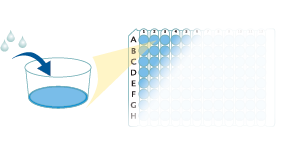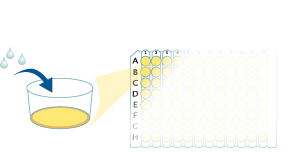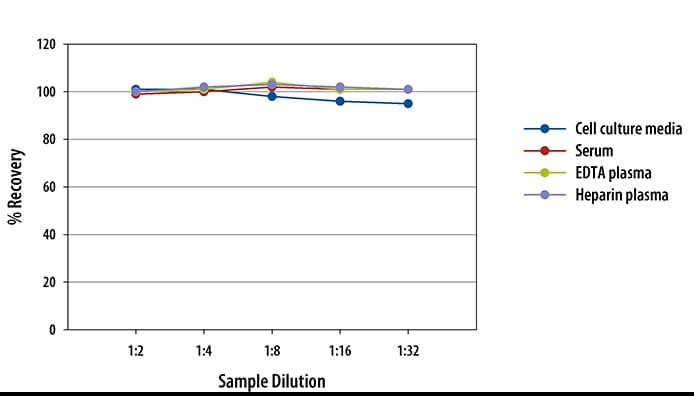 全部商品分类
全部商品分类



 下载产品说明书
下载产品说明书 下载SDS
下载SDS 用小程序,查商品更便捷
用小程序,查商品更便捷


 收藏
收藏
 对比
对比 咨询
咨询Product Summary
Sample Values
Serum/Plasma - Thirty-four samples from apparently healthy volunteers were evaluated for the presence of human IL-8 in this assay. All samples measured less than the lowest human IL-8 standard, 31.3 pg/mL. No medical histories were available for the donors used in this study.| Condition | Day 1 (pg/mL) | Day 5 (pg/mL) |
| Unstimulated | 27,000 | 33.000 |
| Stimulated | 73,000 | 102,000 |
Recovery
The recovery of IL-8 spiked to three different levels throughout the range of the assay in various matrices was evaluated.
| Sample Type | Average % Recovery | Range % |
|---|---|---|
| Cell Culture Media (n=5) | 98 | 85-114 |
| Citrate Plasma (n=5) | 105 | 95-114 |
| EDTA Plasma (n=5) | 103 | 97-111 |
| Heparin Plasma (n=5) | 102 | 92-107 |
| Serum (n=5) | 98 | 88-106 |
Linearity
Scientific Data
 View Larger
View LargerHuman IL-8/CXCL8 Quantikine ELISA Kit RT-qPCR for a set of cytokines (CSF2, IL6, IL8 and IL1B) and chemokines (CXCL1 and CXCL6) of total RNA samples derived from mono- and co-cultures in a transwell assay.The respective co- (+) or mono- (-) culture is indicated on the X-axis. The respective analyzed cytokine or chemokine is indicated in the header of each graph. Expression values are shown in arbitrary units (AU) and have been normalized to beta-2 microglobulin (B2M) mRNA copies. Experiments were performed in triplicates (n = 3). Statistical analysis was performed on the mean values by unpaired comparison of mono-cultured HDF and co-cultured HDF RNA samples by using Student’s t-test (**p<0.01, ***p<0.001; n.s.: not significant). Image collected and cropped by CiteAb from the following open publication (https://pubmed.ncbi.nlm.nih.gov/25919140), licensed under a CC-BY license. Not internally tested by R&D Systems.
Assay Procedure
Refer to the product- Prepare all reagents, standard dilutions, and samples as directed in the product insert.
- Remove excess microplate strips from the plate frame, return them to the foil pouch containing the desiccant pack, and reseal.
- Add 100 µL of Assay Diluent to each well.
- Add 50 µL of Standard, control, or sample to each well. Cover with a plate sealer, and incubate at room temperature for 2 hours.
- Aspirate each well and wash, repeating the process 3 times for a total of 4 washes.
- Add 100 µL of Conjugate to each well. Cover with a new plate sealer, and incubate at room temperature for 1 hour.
- Aspirate and wash 4 times.
- Add 200 µL Substrate Solution to each well. Incubate at room temperature for 30 minutes. PROTECT FROM LIGHT.
- Add 50 µL of Stop Solution to each well. Read at 450 nm within 30 minutes. Set wavelength correction to 540 nm or 570 nm.





Human IL-8/CXCL8 Quantikine ELISA Kit Summary

Background: IL-8/CXCL8
Interleukin-8 (IL-8), also known as IL-8, GCP-1, and NAP-1, is a heparin-binding 8-9 kDa member of the alpha, or CXC family of chemokines. There are at least 15 human CXC family members that all adopt a three beta -sheet/one alpha -helix structure. Most CXC chemokines show an N-terminal Glu-Leu-Arg (ELR) tripeptide motif. IL-8 circulates as a monomer, homodimer, and heterodimer with CXCL4/PF4. The monomer is considered the most bio-active, while the heterodimer can potentiate PF4 activity. IL-8 oligomerization is modulated by its interactions with matrix and cell surface glycosaminoglycans (GAGs). Mature human IL-8 shares 65-69% amino acid (aa) identity with canine, feline, and porcine IL-8. There is no IL-8 gene counterpart in rodent.










